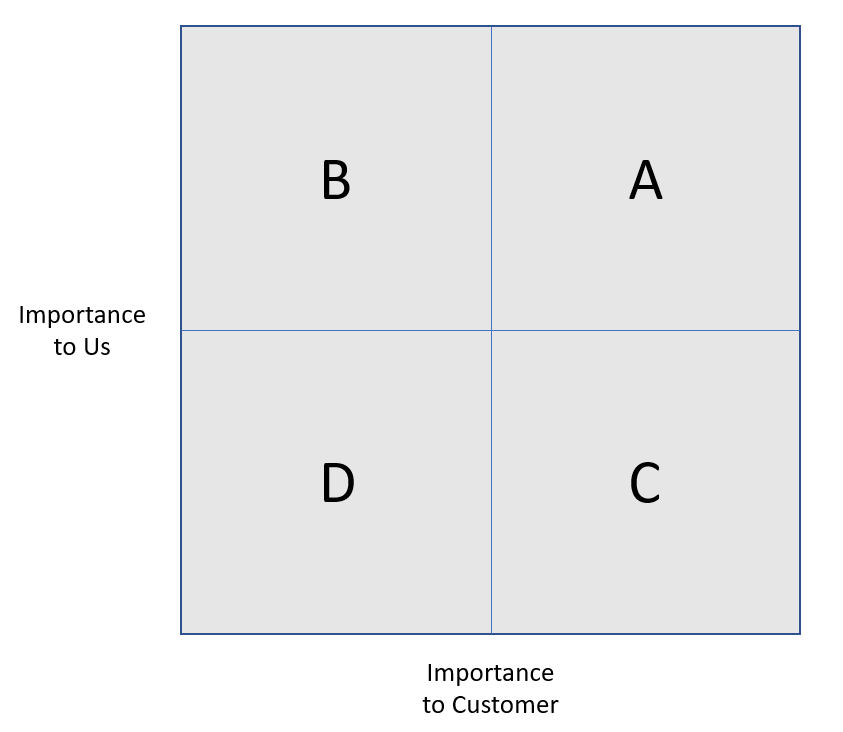The software offers segments 'A', 'B', 'C', and 'D' by default. For enterprise Account Manager plans, these represent quadrants that measure the account's 'Importance to Customer' and 'Importance to Us'.
If you assess that a particular account is important to both parties – an 'A' -quadrant account – it's likely that it should have the focus of your revenue team.

Once your accounts and divisions are segmented, you can take the following approach:
-
Quadrant 'A' plan units should be targeted.
-
Quadrant 'B' & 'C' plan units are possible targets.
-
Quadrant 'D' plan units are least important.
Assessing 'Importance to Us'
To assess the importance of an account to your business ('Importance to Us'), you should consider the following points. The more answers that indicate a high level of importance attached to the account by your sales team, the higher the account will appear in the above chart.
-
The outlook for initiating and developing potential opportunities within the plan unit based on the fit of your products and services and the customer’s requirements
- The current opportunities that you are already pursuing with this account.
- The previous business you've done with this account and the associated run rate.
Assessing 'Importance to Customer'
To assess the importance of an account to the customer ('Importance to Customer'), you should consider the following points. The more answers that indicate a high level of importance attached to the account by the wider enterprise organization, the further to the right the account will appear in the above chart.
- The account's revenue and profit contributions to their parent enterprise. Does a high/medium/low percentage of total enterprise revenue and total enterprise profit come from this plan unit?
- The account's growth rate. If a plan unit is in flat or low growth or a mature market, it may not be strategic to the customer. Alternatively, a small plan unit with triple digit revenue growth trends will be more important than its current revenue suggests.
- The future importance of the account. How important is the plan unit to the enterprise’s future goals, pressures and initiatives? Is this plan unit critical for them to execute their enterprise strategy?
- The account's internal reputation within the enterprise. How does the enterprise view the plan unit’s reputation? Is it positive, negative or neutral?
- The level of funding in the account. How much funding does this plan unit typically receive? If the plan unit is perceived as of high importance, it typically receives a high level of funding.